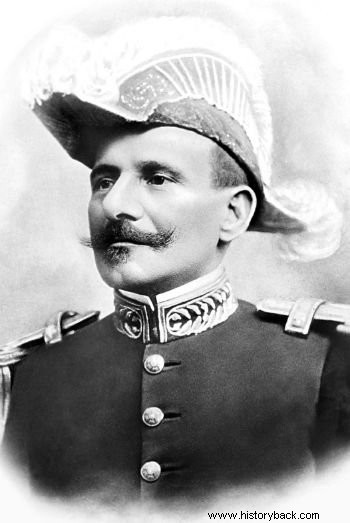Hermes da Fonseca was a gaucho republican military and politician who governed the country between 1910 and 1914.
He was the eighth president of the Republic of Brazil being the nephew of the first president of the Republic in Brazil, Marshal Deodoro da Fonseca, so that he participated in the Proclamation of the Republic, in 1889, in the role of Commander of the 2nd Regiment of Mounted Artillery.
 Hermes da Fonseca was the eighth president of Brazil
Hermes da Fonseca was the eighth president of Brazil
Biography
Hermes Rodrigues da Fonseca was born in the municipality of São Gabriel, Rio Grande do Sul, on May 12, 1855. From an illustrious family and tradition in the Army, he was the son of Marshal Hermes Ernesto da Fonseca and Rita Rodrigues Barbosa.
Like his father, he followed a military career and, in 1871, at just 16 years old, already in Rio de Janeiro, he studied Science and Letters and entered the Military School, being a student of the politician Benjamin Constant, a personality that influenced him on the positivist ideals. .
In 1878, he was one of the founders of the “Republican Club” of the Círculo Militar, the organization responsible for overthrowing the monarchy and instituting the new regime. That same year, he married Orsina Francioni da Fonseca (died 1912) with whom he had five children; and, in 1913, with the artist Nair de Tefé von Hoonholtz, daughter of the Baron of Teffé.
He participated in the Vaccine Revolt (1904), popular rebellion against the smallpox vaccine, which took place in Rio de Janeiro.
Furthermore, he participated in the Armada Revolt (1893), in Rio de Janeiro, a movement led by the Brazilian Navy, against the government of Floriano Peixoto (1839-1895) and, also, in the articulation of the attempted coup given by his uncle Deodoro da Fonseca in favor of the Proclamation of the Republic, which took place on November 15, 1889.
In 1915, after the assassination of the leader of the Conservative Republican Party, Pinheiro Machado (1851-1915), he left politics and began to live in Europe (Switzerland); in 1921, after returning to Brazil, he was elected President of the Military Club, being imprisoned for 6 months the following year, as he was involved in the “Revolta do Forte de Copacabana”. He died in Petrópolis, Rio de Janeiro, on September 9, 1923.
To learn more:Brazil Republic and Proclamation of the Republic.
Hermes da Fonseca Government
In opposition to Rui Barbosa, Hermes da Fonseca won the direct elections, assuming the presidency of the country, aged 55, on November 15, 1910. He ruled from 1910 to 1914, being his vice president Venceslau Brás.
From the beginning, his government was marked by the crisis of the café au lait policy, between coffee-growing politicians in São Paulo and farmers in Minas Gerais, who took turns holding the presidency of the country.
In addition, in the first days of acting, he faced the Revolt of the Whip (1910), a movement of sailors against the mistreatment received. Later, the Contestado War (1912-1916), unleashed in the south of the country and led by the monk José Maria.
He distinguished himself in his military and political career, receiving the rank of General (1900), Captain, Lieutenant Colonel (1894) and Marshal (1906). He was appointed head of the Military House of the Presidency and served as Minister of War in the government of Afonso Pena (1906), instituting compulsory military service and promoting reform in the Brazilian Army. Furthermore, he was Minister of the Supreme Military Court (STM).
The “Salvations Policy ”, was against the civilist campaign, in a way that represented the federal interventions in the state governments, carried out with the pretext of fighting the oligarchic domination over the states.
To learn more:Coffee with Milk Policy.
